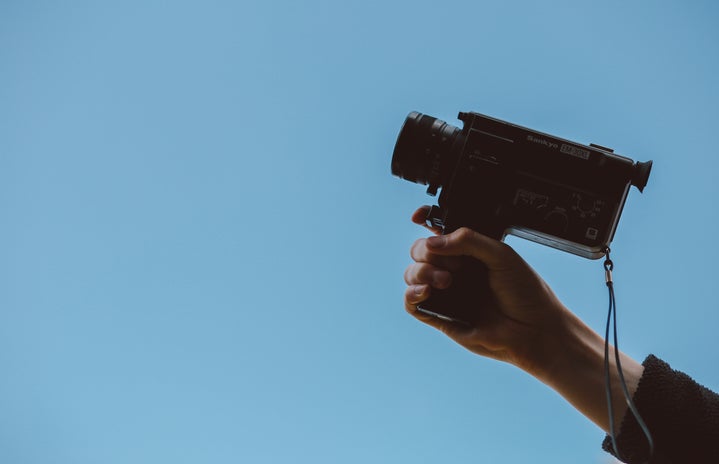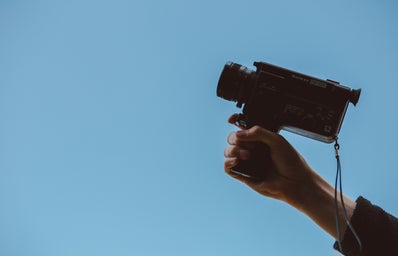I’m bisexual and I’ve always loved rom-coms, but movies about lesbian relationships make me cringe.
After watching Blue is the Warmest Color and Below Her Mouth over Spring Break, I closed my computer and moved on with other activities, but I couldn’t shake the feeling of utter discomfort I had felt in these couple hours.
For those of you who haven’t heard of these movies, let me explain the plots briefly. In Blue is the Warmest Color, A French teen forms a deep emotional and sexual connection with an older art student she met in a lesbian bar. In Below Her Mouth, a fashion editor living with her male fiance falls for lesbian roofer Dallas and the two women start a steamy affair.
In both movies, the relationships are fast-paced and very focused on sex. In all honesty, the movies feel like spectacles for the curious straight eye. Why? Because we only get to see a small part of what makes a relationship so special. We witness so much physical intimacy, but so little mental intimacy. The romantic aspect of these relationships is put aside so that we get to observe in great detail the way bodies intertwine. This is what makes the movie so uncomfortable to watch as a woman who has been in a lesbian relationship before. Not only do we recognize that the sex scenes are somewhat unrealistic, but we also feel that our relationships aren’t limited to just that — sex.
Aside from the misleading representation of compulsive sex and superficial conversations, another aspect of these two movies disappoints: their failure to acknowledge and address the challenges lesbians encounter in their relationships. Neither movie provides a deep understanding of the difficulty of coming out. In Below Her Mouth, Jasmine’s friends and family are never mentioned, leaving us wondering if she ever comes out to someone other than her fiance. In Blue is the Warmest Color, we do see Adele struggling with her friends’ homophobic comments at school and her parents’ conservative outlook, but we don’t find out if she ever comes out to both her friends and family.
Additionally, the lack of diversity in the cast does not allow us to explore the issues that may arise in interracial lesbian couples. Both directors missed an opportunity to recognize the unique challenges linked with intersectional identities.
Lastly, both movies portray femme lesbians discovering their sexuality thanks to confident butches. In case you aren’t familiar with these terms, butches are lesbians with typically masculine traits, behavior, style, and self-perception, whereas femmes tend to display feminine traits. This representation is misleading because it overlooks butch/butch and femme/femme relationships. It also disregards the fact that femmes can be confident in their sexuality and actually help butches come to terms with their sexuality.
I get that these movies also serve artistic purposes and that this may be why the directors chose not to focus on LGBT issues, but part of me believes that the directors could have woven these issues within the narrative without taking anything away from the movie.
This is not to say that I didn’t appreciate watching these movies at all. Blue is the Warmest Color has definitely brought back some underlying feelings from my teenage years in the closet, especially as the movie is French. My heart melted when I saw the way Adele looked at Emma and I felt a surge of happiness watching these two go to a Pride parade together. My eyes filled with tears watching Adele getting bullied by her homophobic classmates in school and repeating over and over that she wasn’t gay.
Overall, we have made progress when it comes to the representation of the LGBT community on our screens. I do feel grateful that I can relate to some queer characters in TV shows such as Cheryl and Toni in Riverdale or Callie Torres in Grey’s Anatomy.
But I would like to see some changes in the stereotypical narratives that I mentioned before. I would like to see more simple, romantic, and realistic scenes. How about a woman bringing breakfast to her girlfriend after a long morning lecture and making cute playlists for her, but also studying and fighting with her, just like any other couple? How about women holding hands and supporting each other through the insecurities and challenges?
All these unrealistic depictions of lesbian relationships contribute to shaping hurtful misconceptions about same-sex relationships. They also make it hard for the lesbian community to feel understood and supported. In the future, I hope that the television and film industry take more initiative to break stereotypes and to work on new narratives that empower the LGBT community.
Want to keep up with HCBU? Make sure to like us on Facebook, follow us on Instagram, check out our Pinterestboard, and read our latest Tweets!



